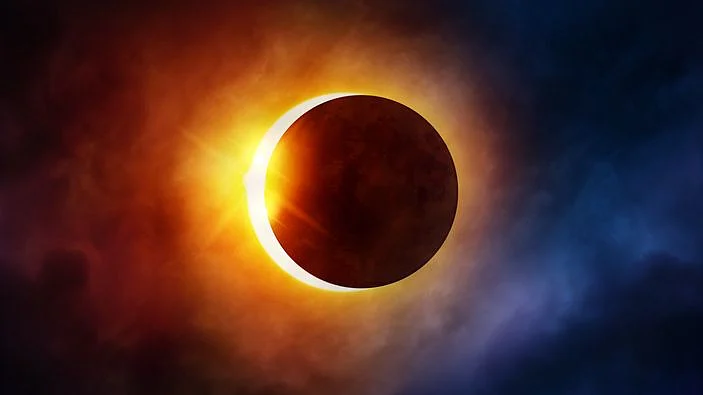The first solar eclipse of 2020 will take place on Sunday, 21 June. This will also be an annular solar eclipse, where the Sun, Moon and the Earth are aligned in a straight line.
A solar eclipse usually occurs two weeks prior or after the occurrence of a lunar eclipse. Myths and misconceptions on eclipses are abundant and resurface every time they approach.
Debunking Common Myths on Eclipses
The scientists at NASA list some popular misunderstandings surrounding eclipses and provide some scientifically-correct explanations.
1. Total solar eclipses produce harmful rays that can cause blindness.
NASA scientists explain that looking directly at the sun is unsafe except during the brief total phase of a solar eclipse (“totality”), when the moon entirely blocks the sun’s bright face, which will happen only within the narrow path of totality.
“During a total solar eclipse when the disk of the moon fully covers the sun, the brilliant corona emits only electromagnetic radiation, though sometimes with a greenish hue. Scientists have studied this radiation for centuries. Being a million times fainter than the light from the sun itself, there is nothing in the coronal light that could cross 150 million kilometers of space , penetrate our dense atmosphere, and cause blindness.”
Since watching the sun before totality could potentially cause retinal damage, the only safe way to look directly at the uneclipsed or partially eclipsed sun is through special-purpose solar filters, such as “eclipse glasses” (example shown at left) or hand-held solar viewers. Homemade filters or ordinary sunglasses, even very dark ones, are not safe for looking at the sun; they transmit thousands of times too much sunlight, NASA adds.
2. If you are pregnant you should not watch an eclipse because it can harm your baby.
The NASA scientists explain that the radiations are harmless and would not affect the developing fetus. In an earlier fact-check, FIT had spoken to doctors as well who reiterated this. Dr Anuradha Kapur, head of Obstetrics & Gynaecology, at Max Hospital, Saket, had said that eclipse has no effect on pregnant women and food.
Dr Kapur urges people to apply logic. A featus is well formed by first term, it will suddenly not start showing abnormalities after 2-3 hour exposure to lunar eclipse.
Also Read: Have You Gotten Your Eyes Checked Yet?
3. Eclipses will poison any food that is prepared during the event.
NASA says that the rumour that food goes bad during eclipse is based on the belief that rays emitted during the eclipse are dangerous. But if the rays were that harmful, they would affect not just cooked food but all food.
Dr Ashwini Setya, a senior gastroenterologist with Max Hospital, Saket, had said he has never seen any case of food going bad or food poisoning during eclipse. He added that while these beliefs are rooted in religion, there is no scientific proof to back them up.
Safety Measures To Follow to Watch the Annular Solar Eclipse
- Inspect your solar filter or solar glasses before using them. Make sure there are no holes in the lens or are damaged in any way.
- If you wear prescription eyeglasses, wear solar glasses over them to view the eclipse.
- Remove your solar filter or glasses only after you have looked away from the sun.
- Do not look at the Sun through any unfiltered camera lens, telescope or any other optical device.
- Only use solar filters or glasses which meet ISO 1231-2 international safety standards.
(At The Quint, we question everything. Play an active role in shaping our journalism by becoming a member today.)
